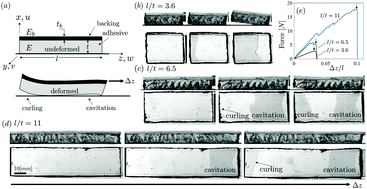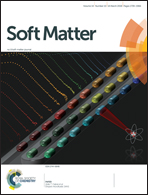Competing failure modes in finite adhesive pads†
Abstract
Thin adhesive pads used to attach objects to each other often fail catastrophically. Here we consider the nature of failure of such a pad under loading parallel to the adhesive substrate. To determine the modes of failure of the pad and to understand what limits its load bearing capacity, we conduct experiments with finite pads composed of a soft adhesive layer with a stiff backing and load them parallel to the surface of adhesion. We find that two different peeling mechanisms emerge as a function of the slenderness of the adhesive pad: an interfacial peeling mechanism that starts close to the pulling end for very long pads, and an unstable curling mechanism that starts at the opposite end for relatively short pads. A minimal theoretical framework allows us to explain our observations and reveals the adhesive bond stiffness as a dominant parameter in defining the peeling mode. A phase diagram that delineates the different regimes of peeling modes brings our experiments and theory together. Our results suggest that unstable peeling by curling may be more common than previously thought, and could perhaps occur naturally in such examples as the gecko foot.



 Please wait while we load your content...
Please wait while we load your content...